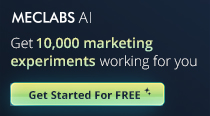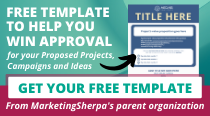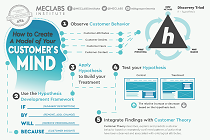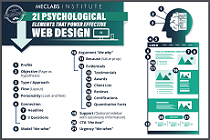
|
SUMMARY:
Discover the Palm Beaches, the official tourism marketing corporation for the area, launched a new, mobile-responsive website. The objective was to curate real-time information for visitors and drive awareness about the area, using user-generated content and social media — in no small part — to do so. Read about how the marketing team drove awareness of the area and garnered the most site pageviews year to date. |
THE CUSTOMER
Discover the Palm Beaches is the official tourism arm of the Palm Beach County, which is a cluster of 39 cities and towns that make up 2,200 square miles roughly the size of the state of Delaware.
“We have 47 miles of coastline stretching from Jupiter and Tequesta on down to Boca Raton,” said Brett Laiken, Senior Director of Integrated Marketing, Discover the Palm Beaches.
The Palm Beaches offer diverse activities including various eco adventures that extend beyond the obvious beach lifestyle with its surfing, fishing and parasailing.
“We also have a lot of hiking and biking and trails throughout,” he said. “Our mission is tourism, so we love to bring people into the county. We advertise in what are called ‘feeder markets’ such as New York, Boston, D.C.”
The team looks at specific target audiences within those areas, those who have come to Florida before or have searched for beaches.
“Ultimately, we feel that the Palm Beaches is the best way to experience Florida, and we love to promote that through all of our marketing efforts,” he said.
While they focus on these customer groups generally, the team has been looking for ways to influentially communicate with millennials as that generation gets older and becomes a higher density of visitation to the area.
CHALLENGE
More and more every year, the travel and destination market is cluttered with advertising to try to sway travelers to come to one place over another.
The team was looking for a campaign that would show people the amount of activities available in the area that would appeal to a range of budgets.
“We want to make sure that we're breaking through all that clutter as a brand and that we're really making a mark for ourselves when it comes to warm weather vacation destinations here in Florida,” said Anna Szymaszek, Manager of Advertising, Discover the Palm Beaches.
The team presented different concepts to a consumer focus group of 520 people in the target demographic, using an online survey. They wanted to find out which concept was most persuasive and made them more inclined to visit the Palm Beaches.
CAMPAIGN
From that research, the “Friends Trust Friends” campaign concept won outright. The concept used real people’s experiences to persuade and break through the marketing clutter.
“It really fostered a lot of the emotions and thoughts that we are looking for when it comes to people seeing our advertising and interpreting it,” said Laiken. “[People] were surprised by all there was to see and do. There were things that they didn't think were possible in the Palm Beaches available to them.”
The purpose of marketing is to inspire, he added, and “as much as we can sit here and talk and talk and promote it, visitors do it in a more genuine fashion, and that's what we really wanted to leverage.”
The campaign leveraged user-generated content from social media to create that inspiration and, at the same time, launched a new website that had the capability to be inclusive of that type of visual content.
Step #1. Raise awareness through visuals and responsive design
Through research and focus groups, the team knew that people love what they see about the Palm Beaches, they're just not necessarily previously aware of it. So, raising awareness was key. They wanted trial to turn into loyalty and loyalty into an ambassador.
The team even commissioned billboards in major cities, including New York in Times Square, as well as commercials in those cities.
“We are very excited to see it continue to grow and spread,” Szymaszek said. “We're just really looking forward to watching the metrics come in and see how we can optimize and update the campaign along the way.”

This more millennial-minded and social-friendly effort began with a responsive-design website featuring elements that would encourage content and sharing, including:

Step #2. Curate local content
When the campaign launched on Jan. 9, it enlisted a tool that would pull images and videos from Facebook, Instagram and Twitter from specific hashtags and location pins.

The team crafted a list of those hashtags and locations — like local restaurants and beaches. From there, if they liked an image, they requested user permission to use it in advertising and marketing channels.
The team had to make sure to approve the content that went into the platform, which they can do in real time. That ability has its advantages. For example, if there is an event going on, the team can approve the photos and have them up on the website and across all of the ad channels.
“At no point will you see a stock image in here or an image that a paid photographer of ours took. It's all real people and real experiences,” Laiken said.
They make sure to use the real username of the visitor who took the photo on the website, and they also use it in most advertising campaigns.

“We do like to give them credit for the amazing photography that they took while visiting the destination,” he said. “You need a campaign with real people, real experiences really happening in the Palm Beaches.”
Step #3. Show visitors the best social media destinations
One of the most unique elements of the website was the interactive Selfie Trail, where those location tags from people’s pictures would be pinpointed on a map. This way, users could look around, see a picture they liked and know exactly where it was taken.
For instance, if you were interested in getting a selfie with a sloth, you’d know that the Palm Beach Zoo & Conservatory Society is the place to go.

“We have unlimited selfie opportunities within the Palm Beaches; these are merely suggestions of places that we think are super visual that will be extra enticing to visitors. You'll notice that it's spread throughout the county,” said Angela Ledford, PR Manager, Discover the Palm Beaches.
To help people use the Selfie Trail, and also as a way of announcing it, the team put up a blog post on the website and developed a short “How to use the Selfie Trail” video, which was put up on YouTube.

So, the "Selfie Trail" is basically a way to highlight the assets of the county by encouraging users to share their selfies. Because they were happening anyway, we just wanted to showcase more of the beauty of the destination in this.
They also use brand social media channels like Facebook, Twitter and Instagram to encourage people to do this, and use #DiscoverPalmBeaches to participate in the Selfie Trail.
Many of the selfies have dedicated pages under the “Explore Cities” tab on the website and give people the highlights of what they need to know about the location before visiting.

For example, if they can bring their dog to a beach and if that area is lifeguarded or not. It also offers the visitor directions.
RESULTS
“For the most part, I think people who are posting to social media nowadays are very aware of how open their lives are. They want people to know where they are and what they are doing and what they're eating and how it was,” Szymaszek said.
The team is using that to their benefit because “we don’t want to hide behind pretty pictures,” she said.
“We’ll continue to expand,” said Laiken. “Again, one of the great things about the Palm Beaches is the size, so there are so many different experiences, so many different perfect spots for that selfie. We're just going to help people find them.”
The campaign’s start in January brought on a sharp uptick in traffic to the website, garnering the most pageviews in the year to date.
The ‘Selfie Trail’ webpage has, overall, the most traffic of any on the new website, and the dedicated pages for geotagged selfies represent slots two through 21 of the pages with the most overall traffic. They also have the most organic traffic as well.
This shows that it’s one thing to write an article, or post a perfectly manicured picture of Juno Beach or the Loggerhead Marine Life Center, but it’s another to show a picture of a real person enjoying their time there.
“That’s really the heart of the “Friends Trust Friends” campaign. We can put so much information out there, and we can write stories for days. But nothing is going to come across more than the word of a friend and somebody who's actually experienced that for themselves,” Laiken said.
Creative Samples
Sources
Related Resources
Social Media Marketing: Travel company uses Facebook as a tool for generating testimonials
How brand marketers hitched a ride on the solar eclipse in social media marketing
Get Better Business Results With a Skillfully Applied Customer-first Marketing Strategy

The customer-first approach of MarketingSherpa’s agency services can help you build the most effective strategy to serve customers and improve results, and then implement it across every customer touchpoint.
Get More Info >MECLABS AI

Get headlines, value prop, competitive analysis, and more.
Use the AI for FREE (for now) >Marketer Vs Machine

Marketer Vs Machine: We need to train the marketer to train the machine.
Watch Now >Live, Interactive Event

Join Flint McGlaughlin for Design Your Offer on May 22nd at 1 pm ET. You’ll learn proven strategies that drive real business results.
Get Your Scholarship >Free Marketing Course

Become a Marketer-Philosopher: Create and optimize high-converting webpages (with this free online marketing course)
See Course >Project and Ideas Pitch Template

A free template to help you win approval for your proposed projects and campaigns
Get the Template >Six Quick CTA checklists

These CTA checklists are specifically designed for your team — something practical to hold up against your CTAs to help the time-pressed marketer quickly consider the customer psychology of your “asks” and how you can improve them.
Get the Checklists >Infographic: How to Create a Model of Your Customer’s Mind

You need a repeatable methodology focused on building your organization’s customer wisdom throughout your campaigns and websites. This infographic can get you started.
Get the Infographic >Infographic: 21 Psychological Elements that Power Effective Web Design

To build an effective page from scratch, you need to begin with the psychology of your customer. This infographic can get you started.
Get the Infographic >Receive the latest case studies and data on email, lead gen, and social media along with MarketingSherpa updates and promotions.